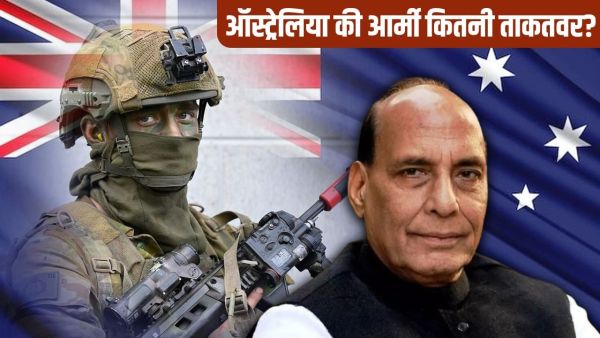
Defense Minister Rajnath Singh will be on a two-day visit to Australia on 9 and 10 October. He reached Sydney on Wednesday. Australia is an important partner of India, hence this visit of the Defense Minister is important. There is discussion that 3 agreements can be signed during this period. In this Information sharing, maritime security and joint military activities agreements are included. Rajnath Singh will participate in the Business Round Table in Sydney. Representatives from the defense industry of both the countries will participate in this program.
Let us use this excuse to know how powerful is the Australian Army? How many hi-tech weapons does the army have? Where does Australia buy its weapons?
How powerful is the Australian Army?
Australia is one of the most stable and prosperous countries in the world, and its security policy focuses on the Indo-Pacific region. The Australian Army is the ground branch of the three armies of the country, while the other two are the Royal Australian Navy (Navy) and the Royal Australian Air Force (Air Force). Overall, Australia's military strength is considered to be based on technology, training and partnerships (alliances).
It is not as big in numbers as some of the bigger countries, but in terms of quality, high-tech weapons and joint exercises, it is impressive and modern. The focus of the army's deployment remains on mission support along the country's borders, northern coasts, and partner countries in the Indo-Pacific.
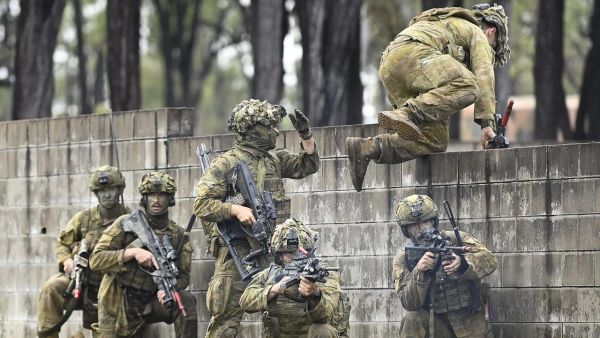
The real strength of the Australian Army is modern technology, excellent training and strong international partnerships.
It also plays an active role in peacekeeping, humanitarian assistance and disaster relief (HADR). The main basis of Australian Army's strength is joint exercises - especially with America, Britain, Japan, India and ASEAN countries. Additionally, a number of defense partnership frameworks provide additional credibility to Australia's security. At the operational level, the small but rapid response capability, especially for special forces, air-mobile infantry, and armored units, makes it well suited for modern warfare.
Which hi-tech weapons does the Australian Army have?
- Armored and combat vehicles: Mainly 8×8 platforms like AS9/AS10 self-propelled howitzer, M777 ultra-light howitzer, and Boxer CRV (Combat Reconnaissance Vehicle). All these categories of cannon are modernized with sensor, communication and protection systems. Modernization programs for Infantry Fighting Vehicles are underway, which aim to include more protective and multi-role vehicles.
- Helicopters and Air-Mobility: The Army Aviation has moved forward with the acquisition of tactical transport helicopters (such as the transition to the new platform from the MRH-90 Taipan), and the AH-64E Apache Guardian as attack helicopters. They come with night-fighting, precision strike and networked communication.
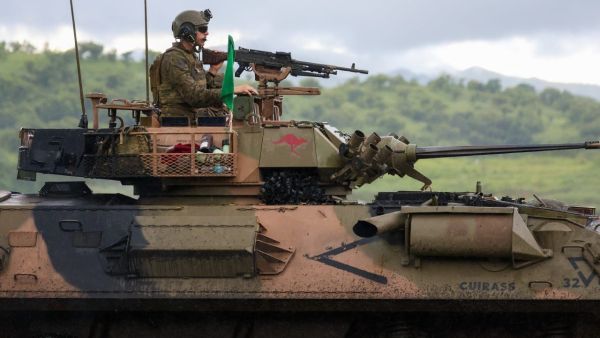
Hi-tech armored vehicles, precision artillery, modern helicopters, drones and digital networks make the army powerful. Photo: Ian Hitchcock/Getty Images
- Missile and Precision Fire: Ground-launched rocket systems (like HIMARS) make it more powerful. Which provides long range accurate firepower. Along with this, the Australian Army also has emphasis on laser-guided and GPS-guided ammunition.
- Communications, Surveillance and Electronics: Battlefield Management Systems, secure radios, drones, UAV surveillance, and electronic warfare support systems give the Army an edge in obtaining information.
- Personal Weapons and Gear: Modern assault rifles, sniper systems, night-vision devices, body armor and digital situational awareness equipment also add to its strength.
Australian Army also has joint capability
The Royal Australian Navy's modern frigates, submarine program, nuclear-submarine pathway and Air Force's platforms like F-35A, P-8A, AEW&C play a decisive role in the overall military power. The Army works with these services in joint operations.
Where does Australia buy weapons from?
Australia's major partner countries in defense deals are America, many European countries, Israel etc. America supplies fighter jets, helicopters, missiles, communication and sensor technology to this country. Australia has been taking Boxer CRV, artillery systems from Germany, various defense systems and technology cooperation from France and UK, while from Israel it is taking drones, sensors, Iron-Dome inspired and air-defense technology etc.
Like self-reliant India, Australia is also investing in the defense sector. Local companies are active in shipbuilding, electronics and maintenance-upgrades. Production and technology transfer with foreign companies is encouraged through offset and industrial partnership. Australia emphasizes quality over quantity. Fewer platforms, but state-of-the-art technology, better maintainability, and higher operational availability. Additionally, interoperability remains a priority as per alliances.
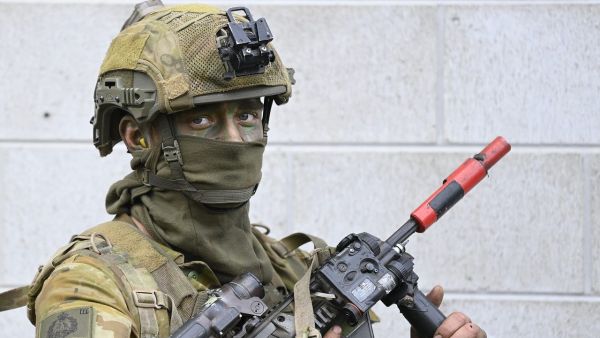
America and European countries are major partners in arms procurement. Photo: Ian Hitchcock/Getty Images
History of the Australian Army
In the 19th century there were militia and volunteer units from various colonies. Following the federation of Australia as a nation in 1901, the Commonwealth Military Forces were formed between 1901–1903, which later became the formal formation of the Australian Army. The Gallipoli campaign of the Australian and New Zealand Army Corps during the First World War (1914–1918) became an icon of Australian military history. Australian soldiers also played an important role on the Western Front. This period shaped the national identity and military tradition.
Australian units fought in Europe, North Africa and the Pacific front during the Second World War (1939–1945). Due to the Japanese threat, Australia's home defense and the security of its northern coasts became extremely important.
Australia contributed to the wars in Korea, Malaysia, Borneo and Vietnam. During this period, security relations with America deepened. Many partners were formed.In the modern era, this army has participated in peacekeeping operations in East Timor (Timor-Leste), Solomon Islands, Afghanistan and Iraq. The Army made a special identity in regional partnership missions. Today the focus is on Indo-Pacific security, cyber-EW, and long-range precision effects.
Army challenges
Due to its vast maritime perimeter and low population density, Australia faces the challenge of remoteness and rapid response. Therefore air-mobile, sea-lift and networked command and control are important. Investments in advanced sensors, drones, AI-enabled analytics, cyber security and electronic warfare are increasing. There is also emphasis on domestic defense production so that the supply chain can be more reliable.
AUKUS, QUAD participation, and joint exercises with countries like US-Japan-India-UK strengthen inter-operability. Despite being a small force, professional training, strength of the NCO corps, and welfare system maintain the quality of the army. Support and rehabilitation programs for veterans are also important.
Australia's military may be numerically smaller than major powers, but its real strength lies in modern technology, excellent training, strong international partnerships and rapid-reaction capabilities. Hi-tech armored vehicles, precision artillery, advanced helicopters, drones and digital networks give it force-multipliers. America and European partners are the major partners in arms procurement, while the domestic industry is also getting a rapid boost. The Australian Army has always demonstrated professionalism and reliability. This is the reason why this army is considered a capable, modern and reliable force in its region.
-
Edinburgh Airport shut down after 'drones seen in exclusion zone'

-
'Bhai Was Self-Aware' When Salman Khan Asked Rajat Bedi To 'Not' Make A Comeback With Radhe
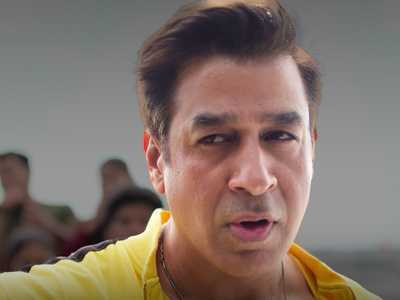
-
Freddie Flintoff leaves This Morning's Ben Shephard red-faced as he calls him out

-
ITV Loose Women fans beg 'make it stop' as show opens with musical performance

-
The UK town where it costs an insane £50 an hour to park your car
